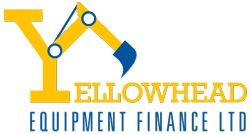
Does Cash-flow Control Your Growth?
December 29, 2017
Equipment financing for Franchise operators
January 29, 2018When leasing or financing heavy equipment – maintaining that equipment over time protects your resale, and ensures that you upload the terms of many leasing agreements.
Here are 5 tips to keep your equipment in Tip-top shape for the duration of your financing arrangement!
1. Keep your operators fully and competently trained
Since your equipment will often be manned by a number of operators – a key feature of your equipment maintenance checklists should be the currency of training of your operators.
When you acquire new equipment – finish your mechanical reviews and checks, and ensure that your operators a fully trained right away. Over time – you’ll want to regularly refresh that training to prevent ‘rusty’ skills from creating unnecessary breakdowns.
Use your training routines for new equipment to improve your maintenance and training standards for other existing equipment too – and see the benefits across your fleet.
2. Maintain and test your lubricants often
We all know that appropriate grease and oil make our equipment run smoother, with less wear, for longer. Since it’s so critical to the performance of your equipment routine checks and tests of the state of lubrication, and the quality of your lubricants should be job one in the operators schedule.
Looking for signs of lubricant breakdown, seal leaks, and contamination can prevent significant issues – and minimize downtime. Working with your vendors – look to having a regular pattern of analysis to ensure your lubricants are doing the job intended.
Lastly – make sure for top-ups and replacements you use the correct fluids and volumes during your own maintenance.
3. Look for signs of wear or failure regularly
The constant impact of engine vibration and temperatures can cause metal fatigue, breakdown of composite materials, and damage to plastics and rubbers. Keeping things smooth and balanced will minimize that wear.
- Gear and belt alignment can cause additional vibration
- Accidents, collisions, and interference can cause physical damage that may not be visible
- High temperatures from faulty cooling, dirty filters or poor lubrication can wear internal parts faster – with a higher repair cost
- Age will damage belts and lubrication, crack valve and bearing seals, and warp or stretch components.
Any signs of damage should be repaired as soon as possible to minimize costs and downtime.
4. Keep it clean!
Clean equipment performs better than dirty equipment – and it lasts longer. Dirt on exposed seal surfaces adds the risk of damage or failure. Clogged filters reduce fuel efficiency and heat up internals – and dust and dirt getting into vacuum lines can cause intermittent errors.
Breathers keep your cab pressures up – and prevent dust and dirt from contaminating electronics and controls. Your heavy equipment should be stored in a shed or structure to prevent excessive rust and rot – and should be run regularly to maintain lubrication when the equipment isn’t active.
5. Stick to your maintenance schedules and keep your paperwork in shape
You maintenance schedules should be budgeted and expected costs of ownership. Keeping things on the calendar will maintain warranties, and extend the life of your equipment.
- Transmissions and gear boxes need regular maintenance, and to be checked for vibration or wear
- Your seals and gaskets will wear and are an easily managed replaceable item on a maintenance schedule
- Full fluid testing – including particulate analysis will keep you clearly aware of wear and tear
- Torque checking on common bolts prevents accidents
- Friction materials like clutches can be monitored and replaced before they impact a work schedule
These steps will help keep your equipment active and on the job site longer, and more efficiently getting the job done for you – and your bank account. Engaging a maintenance plan throughout your organization can help you get the best return on your equipment investments.
Contact Yellowhead for all your leasing needs – get in touch or request a quote online!





